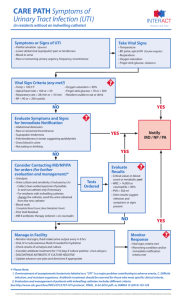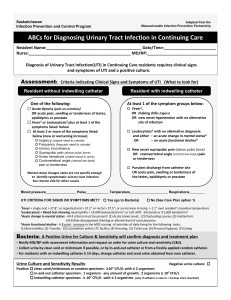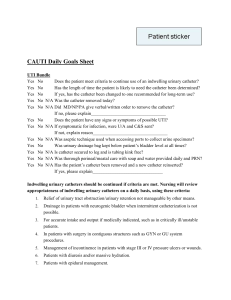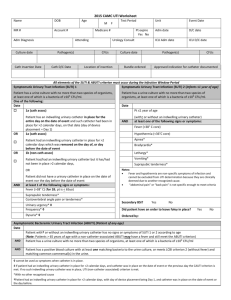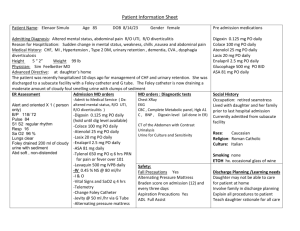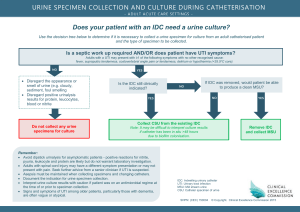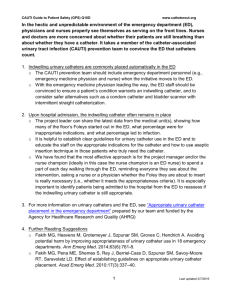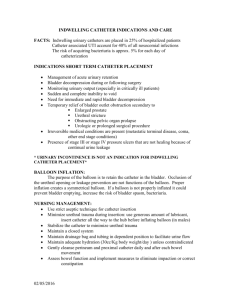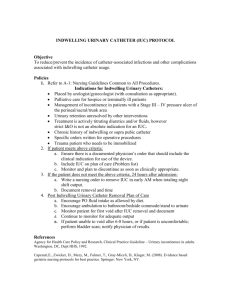Word version
advertisement
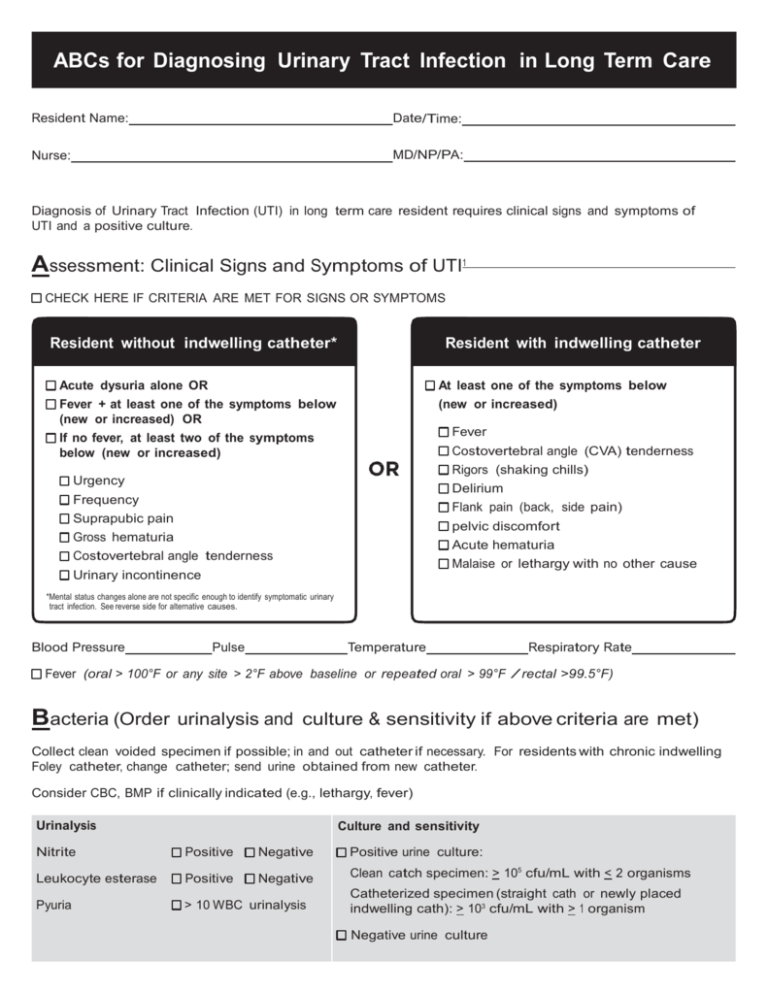
ABCs for Diagnosing Urinary Tract Infection in Long Term Care Resident Name: Date/Time: Nurse: MD/NP/PA: Diagnosis of Urinary Tract Infection (UTI) in long term care resident requires clinical signs and symptoms of UTI and a positive culture. Assessment: Clinical Signs and Symptoms of UTI1 CHECK HERE IF CRITERIA ARE MET FOR SIGNS OR SYMPTOMS Resident without indwelling catheter* Resident with indwelling catheter Acute dysuria alone OR Fever + at least one of the symptoms below (new or increased) OR At least one of the symptoms below (new or increased) Fever If no fever, at least two of the symptoms below (new or increased) Costovertebral angle (CVA) tenderness Rigors (shaking chills) Delirium Urgency Frequency Flank pain (back, side pain) Suprapubic pain Gross hematuria pelvic discomfort Acute hematuria Costovertebral angle tenderness Malaise or lethargy with no other cause Urinary incontinence *Mental status changes alone are not specific enough to identify symptomatic urinary tract infection. See reverse side for alternative causes. Blood Pressure Pulse Temperature Respiratory Rate Fever (oral > 100°F or any site > 2°F above baseline or repeated oral > 99°F / rectal >99.5°F) Bacteria (Order urinalysis and culture & sensitivity if above criteria are met) Collect clean voided specimen if possible; in and out catheter if necessary. For residents with chronic indwelling Foley catheter, change catheter; send urine obtained from new catheter. Consider CBC, BMP if clinically indicated (e.g., lethargy, fever) Urinalysis Culture and sensitivity Nitrite Positive Negative Positive urine culture: Leukocyte esterase Positive Negative Clean catch specimen: > 105 cfu/mL with < 2 organisms Pyuria > 10 WBC urinalysis Catheterized specimen (straight cath or newly placed indwelling cath): > 103 cfu/mL with > 1 organism Negative urine culture Care Plan Review for treatment with antibiotics Criteria met for UTI symptoms AND positive urine culture Monitor vital signs Monitor fluid intake and increase if indicated Criteria not met for UTI symptoms (with or without a positive urine culture) Review for alternate diagnosis Monitor vital signs and symptoms Monitor fluid intake and increase if indicated Re-evaluate if above criteria for symptomatic UTI emerge AT ANY POINT, re-evaluate and review with MD/NP/PA, if symptoms progress or if resident appears clinically unstable (e.g., fever > 102° F, heart rate > 100, RR > 30, BP < 90 systolic, finger stick glucose < 60 or > 400, resident unable to eat or drink). Prior to treatment consider review: Advance directives for limiting treatment (especially antibiotics): NO YES Medication Allergies: NO YES The resident is on warfarin (Coumadin) NO YES Possible causes for mental status changes include: • Constipation • Infections such as pneumonia • Pain • Hypo/hyperglycemia • Dehydration • Urinary retention • Medication or dose change • Environmental triggers • Hypoxia NOTES 1 CID 2010;50:625-663 (IDSA guidelines CA-UTI): ID 2009;48:149-171 (IDSA guidelines LTCF): ICHE 2001;22:120-124 (Loeb criteria) CID 2005;40:643-54 (IDSA guidelines ASB)
